SWJ Factsheet: The Pharmaceutical Soldier - Performance Enhancing Drugs on the Battlefield - An Open Source Intelligence Study
S.A. Cavanagh
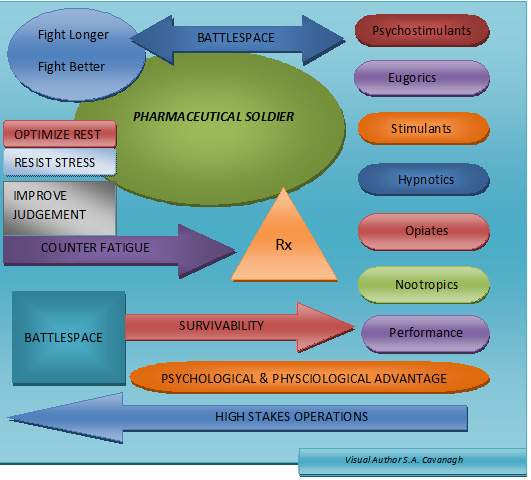
Executive Summary
The pharmaceutical soldier is not a new concept. Professional war fighters have been exploiting drugs for centuries to provide physiological and psychological advantage on the battlefield. Pharmaceuticals provide the capability to enhance performance, counter fatigue, improve judgement, resist stress and optimize rest. Viking Berserkers ingested mushrooms, Inca warriors chewed coca leaves, America’s civil war soldiers used morphine, Canadian soldiers consumed cocaine liberally during trench warfare, and the German Wehrmact took speed for sustained momentum. (Kamienski, 2018) (Rickett, 2016) Contemporary battlefield pharmaceuticals highlight, Syrian “Jihadists” use of Captagon mixed with opioids, hashish and sometimes cocaine. (Rickett, 2016) Modafinil (Provigil) is the wakefulness promoting agent of choice for the French Foreign Legion, and the Indian and American air forces. Russian soldier’s in Afghanistan pioneered combat meldonium use, improving stamina and oxygen carrying capacity in the mountains. (Kamienski, 2018) Pharmaceutical soldiers use prescription, over the counter medications and supplements to achieve therapeutic benefits. Drugs classifications include stimulants, sedatives, Nootropics, wakefulness promoting agents, eugorics and psychostimulents. The short-term gain of consuming battlefield performance enhancers is illustrated by the grand scale of documented use by militaries. Long term risk is difficult to qualify and requires evidence-based study. Ethical dilemmas are widespread and far reaching however, not within the scope of this paper. What is certain, is that performance enhancing drugs are providing an edge for soldiers engaged in high stakes operations, when the need to fight longer, fight better and think clearly under fatigue, genuinely matters. Military institutions that study performance enhancing drugs to develop safe, comprehensive and supportive drug programs are moving prudently to realize the physiological and psychological superiority soldiers need to survive the battle space.
The Author of, The Pharmaceutical Soldier-Performance Enhancing Drugs on the Battlefield-An Open Source Intelligence Study does not endorse, recommend or encourage performance enhancing drug use by military personnel or other civilian paramilitary, high stakes professionals, allied services or other persons. Use of supplements, caffeine, tobacco, prescription and over the counter medications encompasses risk. Always follow advice from medical professionals and carefully read medication instructions and warnings. Self prescribing medication and off label use is inherently dangerous and should not be practiced.
Contents
- Stimulants-“GO PILLS”
- Wakefulness Promoting Agents- psychostimulant/eugoric “GO PILLS”
- Performance Enhancing Drugs
- Hypnotics- “NO GO PILLS”
- Nootropics
- Opiates & Opioids
Stimulants “GO PILLS”
Captagon “GO PILL”
Captagon-fenethylline hydrochloride
Captagon=Theophylline + Amphetamine
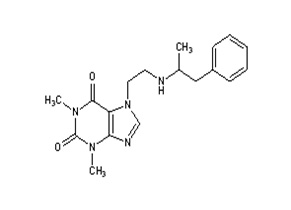
(RxList, 2018)
Who uses Captagon?
- Captagon is popular in the war in Syria
- The “jihadists’ drug” (Gidda, 2017)
- ISIS fighters
What is Captagon? What does Captagon do?
- Captagon — also known by its generic name fenethylline — is actually relatively mild in the world of amphetamines and amphetamine like drugs (Miller, 2015)
- Theophylline is similar to caffeine, but it also opens up a person's airways, and is sometimes used to treat people with asthma
- Theophylline (fenethylline) is structurally classified as a methylxanthine
- Amphetamine, is the main psychoactive ingredient in Captagon
- "Amphetamines speed everything up"
- produce feelings of pleasure and increased alertness
- reduce the need for sleep and food
- stimulates the central nervous system
- increasing alertness
- boosting concentration and physical performance
- providing a feeling of well-being
- often mixed with opioids, hashish and sometimes cocaine (Rickett, 2016)
Users Description of Captagon high
- "I felt like I own the world, high"
- "Like I have power nobody has”
- “A really nice feeling."
- "There was no fear anymore after I took Captagon” (Drahl, 2015)
Adverse Side Effects of Captagon
- Highly Addictive
- Extreme depression
- sleep deprivation
- heart and blood vessel toxicity
- malnutrition (Drahl, 2015)
Dexedrine “GO PILL”
DEXEDRINE (dextroamphetamine sulfate)
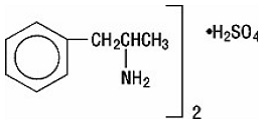
(RxList.com, 2018)
Who uses Dexedrine?
- Previous stimulant drug of choice U.S. Air Force mostly replaced with Modafinil
- People with ADHD-Attention Deficit Hyperactivity Disorder
- People with Narcolepsy
- Shift workers, truck drivers, recreational users (Patterson, 2018)
What is Dexedrine? What does Dexedrine do?
- DEXEDRINE (dextroamphetamine sulfate) is a sympathomimetic amine of the amphetamine group
- Stimulant
- Stimulates central nervous system
- Physiological process booster
Dexedrine Provides
- Heightened alertness
- A subjective increase in energy
- Vigilance and focused attention (Cunha, 2018)
- pleasure-inducing transmitter that is related to movement, emotion, and motivation
- increased heart rate, blood pressure, and muscle response
- mood changes and regulation of the sleep/wake cycle
- Better decision-making skills
- Improved mood
- Decreased stress
- Feelings of inflated self-worth
- Fearlessness
- Increased self-esteem
- More appropriate family and social interactions (Patterson, 2018)
Adverse Side Effects of Dexedrine
- Restlessness
- Dizziness
- Insomnia
- Impaired movement
- Irritability
- Shakiness
- Increase blood pressure
- Higher heart rate
- Headache
- Motor and verbal tics
- Vision problems
- Dry mouth
- Diarrhea
- Constipation
- Sexual dysfunction
- Risk of seizure (Patterson, 2018)
Adverse Side Effects Long Term Abuse of Dexedrine
- Manic symptoms-insomnia, very high energy, poor decision making
- Psychotic symptoms-hallucinations, delusional thinking, paranoia, and a disconnection from reality
- Aggression-physical violence, verbal outbursts (Patterson, 2018)
Amphetamines “GO PILLS”
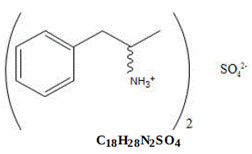
Amphetamine Sulfate
(RxList, 2018)
What are Amphetamines? What do Amphetamines do?
- Amphetamines are central nervous system stimulants that affect chemicals in the brain and nerves that contribute to hyperactivity and impulse control
- Amphetamine Sulfate is a sympathomimetic
- The combination of amphetamine and dextroamphetamine is used to treat narcolepsy and attention deficit hyperactivity disorder (ADHD)
Cocaine-Stimulant “GO PILLS”
Cocaine hydrochloride
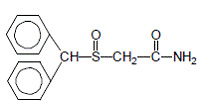
(ChemSpider, 2018)
Who uses Cocaine?
- Fighters with the Islamic State of Iraq and the Levant group fighters, known as ISIL or ISIS sometimes use Cocaine in Syria (Rickett, 2016)
- Cocaine was a drug of choice during World War I, German & French pilots used cocaine, British & Canadian soldiers were issued cocaine in the trenches in medicine kits, London pharmacists sold medical kits with cocaine and heroin (Kamienski, 2018)
What is Cocaine? What does Cocaine do?
- Cocaine is extracted from the leaves of coca plants
- Rapid acting
- Increase dopamine release
- Dopamine is a neurotransmitter that provides positive and "rewarding" feelings
- This increase of dopamine is, in part, what leads to the subjective "high" of cocaine use (DRUGABUSE.COM, 2018)
- A local anaesthetic and vasoconstrictor and is clinically used for that purpose, particularly in the eye, ear, nose, and throat
- Powerful central nervous system effects similar to the amphetamines and is a drug of abuse (DRUGBANK, 2018)
The high experienced includes
- Feelings of euphoria
- Increased energy
- Grandiosity; inflated self-esteem
- Elevated mood (DRUGABUSE.COM, 2018)
Adverse Effects of Cocaine
- Heart muscle damage-cardiomyopathy
- Intravenous cocaine use can lead to endocarditis
- Heart attacks
- Cardiac arrhythmias, which may be fatal (DRUGABUSE.COM, 2018)
Symptoms of Cocaine-induced Cardiotoxicity include
- Inflammation of heart muscle
- Rupture of the aorta, the major artery leading from the heart
- Severe declines in health and life quality due to reductions in cardiac function
- Cocaine-induced heart failure or damage
- Increased risk of stroke, or brain damage
- Kidney damage (DRUGABUSE.COM, 2018)
Cocaine Toxicity
- Intense agitation, convulsions, hypertension, rhythm disturbance, coronary insufficiency, hyperthermia, rhabdomyolysis, and renal impairment (DRUGBANK, 2018)
Adverse Side Effects
Less common or Rare
- confusion
- dizziness or light-headedness
- excitement, nervousness, restlessness, or any mood or mental changes
- fast or irregular heartbeat
- hallucinations or seeing, hearing, or feeling things that are not there
- headache (sudden)
- increased sweating
- nausea (DRUGBANK, 2018)
Wakefulness Promoting Agents- psychostimulant/eugoric “GO PILLS”
“Forcing our enemies to perform continuously without the benefit of sufficient daily sleep is a very effective weapon.” To win this war of exhaustion, we must “manage fatigue among ourselves.” We must drug our troops to outlast yours. You, in turn, must drug your troops to keep up. On the battlefield of the future, there is no sleep but death. -U.S. Air Force Research Laboratory (Saletan, 2013)
PROVIGIL/Modafinil 2-[(diphenylmethyl)sulfinyl]acetamide
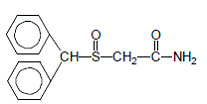
(RxList, 2018)
Who uses PROVIGIL/Modafinil?
- U.S. Air Force as a replacement for Amphetamines or “Uppers” (Kamienski, 2018)
- French Foreign Legion
- Indian Air Force
- United Kingdom Military-unconfirmed
- Astronauts-International Space Station
- Peoples Republic of China has approved PROVIGIL/Modafinil-however China has a similar formula called Night Eagle (SCMP, 2011)
What is PROVIGIL/Modafinil? What does PROVIGIL/Modafinil do?
- A eugoric which is a medication that promotes wakefulness
- Shown to improve cognitive performance
- Promotes wakefulness among shift workers (Westcott, 2005)
- Used to treat excessive sleepiness caused by sleep apnea, narcolepsy
- New generation psychostimulant
- It is thought to work by altering the natural chemicals (neurotransmitters) in the brain (Drugs.com, 2018)
Adverse Side Effects of PROVIGIL/Modafinil
- fever
- easy bruising or bleeding
- hallucinations
- depression
- chest pain
- fast/pounding/irregular heartbeat
- mental/mood changes (such as confusion, depression, hallucinations, rare thoughts of suicide) (RxList.com, 2018)
Night Eagle-Formula Remarkably Similar to Modafinil
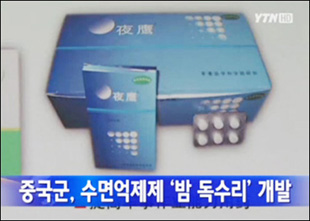
[Image-thought to be Night Eagle Drug] (Ye-seul, 2011)
Who uses Night Eagle?
- China-Peoples Liberation Army
What is Night Eagle? What does Night Eagle do?
- Night Eagle is Chinas answer to Modafinil
- Formula is similar to Modafinil
- Likely a reverse engineered version of Modafinil
- Night Eagle may be considered a competitor drug to Modafinil-a display of Chinas pharmaceutical expertise (Moreno, 2012)
- Chinese government is hesitant to disclose formula, leading to rumours it is a rebranding of Modafinil
- Keeps soldiers awake for up to 72 hours
- Helps soldiers to maintain mental function and alertness despite a lack of sleep (Gorvett, 2012)
- Help soldiers cope with sleep deprivation during missions (SCMP, 2011)
- Help maintain cognitive abilities when they are deployed in search and rescue operations after earthquakes, floods and other disasters and some special military missions, (SCMP, 2011)
Adverse Side Effects
- Chinas Academy of Military Medical Sciences, did not give details about possible side effects (SCMP, 2011)
Ritalin-Methylphenidate “GO PILL” or “NOOTROPIC”
- See Nootropics Ritalin-Methylphenidate
Adderall “GO PILL” or “NOOTROPIC”
- See Nootropics Dextroamphetamines Adderall
Performance Enhancing Drugs
Meldonium/Mildronate-Performance Enhancing Drug
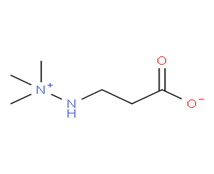
(ChemSpider, 2018)
Who uses Meldonium/Mildronate?
- Russian Soldiers
- Used by Soviet troops in Afghanistan
What is Meldonium/Mildronate? What does Meldonium/Mildronate do?
- Scientist Ivars Kalvins invented meldonium in the 1970s when Latvia was still a Soviet republic
- Used to boost the stamina of Soviet troops fighting at high altitudes in Afghanistan in the 1980s
- “If the soldiers are to operate in the mountains, there’s a lack of oxygen,” Kalvins says. “The way to protect against damage is by using Mildronate”
- Increased oxygen-carrying capacity (Reuters, 2018)
- Meldonium is a fatty acid oxidation inhibitor
- Medication works by altering pathways for carnitine, a nutrient involved in fat metabolism (Newman, 2018)
Used to treat patients with
- heart conditions
- angina
- chronic heart failure
- cardiomyopathy and other cardiovascular disorders
- helps to adjust the body’s use of energy and can boost stamina and endurance (Niiler, 2016)
Adverse Side Effects Meldonium/Mildronate
- headache
- nervousness
- dizziness
- sleeplessness
- allergic symptoms
- a fall in blood pressure
- tachycardia (Seppälä, 2015)
HYPNOTICS “No Go Pills”
AMBIEN-“No Go Pills”
AMBIEN (zolpidem tartrate)
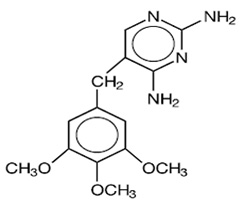
(RxList, 2018)
Who uses it?
- U.S. Military-Air Force & Special Operations-likely other U.S. Military branches use Ambien
- The Pentagon doesn’t have specific figures, but in 2007 Time magazine estimated 10,000 soldiers overseas were authorized to take sleeping pills (Drummond, 2013)
- Indian Air Force
- United Kingdom-Unknown if use “No Go Pills”
- France-Unknown if use “No Go Pills”
What is it? What does it do?
- Slows down brain activity so you can fall asleep (RxWiki, 2018)
- AMBIEN (zolpidem tartrate) is indicated for the short-term treatment of insomnia characterized by difficulties with sleep initiation
- AMBIEN has been shown to decrease sleep latency for up to 35 days in controlled clinical studies (RxList, 2018)
Adverse Side Effects of Ambien
- Drowsiness
Serious side effects of Ambien may include
- Getting out of bed while not being fully awake and taking part in an activity that you do not know you are doing
- Abnormal thoughts and behaviour including
- more outgoing or aggressive behaviour than normal
- confusion
- agitation
- hallucinations (seeing or hearing things that aren't there)
- worsening of depression
- suicidal thoughts or actions
- memory loss
- anxiety
- severe allergic reactions including:
- swelling of the tongue or throat
- trouble breathing
- nausea and vomiting (RxWiki, 2018)
“NOOTROPICS”
What are Nootropics?
Nootropics is an umbrella term for a class of chemicals — some naturally-occurring, some manmade — that give cognitive benefits to the human brain. (SmartDrugSmarts.com, 2017)
To get really technical, in order to be a nootropic, a substance must meet five criteria set by Dr. Corneliu E. Giurgea, the man who coined the term “nootropic.” The substance must…
- Enhance memory and ability to learn
- Help the brain function under disruptive conditions, such as hypoxia (low oxygen) and electroconvulsive shock
- Protect the brain from chemical and physical assaults, such as anti-cholinergic drugs and barbiturates
- Increase the efficacy of neuronal firing control mechanisms in cortical and sub-cortical regions of the brain
- Possess few or no side effects and be virtually non-toxic (SmartDrugSmarts.com, 2017)
What Are Nootropics’ Benefits?
- Memory – traditional memory pills have evolved into performance-enhancing nootropics that support working memory, storage, recall, learning, knowledge retention and more
- Attention – various aspects of attention, focus and concentration that are enhanced by nootropics can give users an edge in productivity
- Learning – students of academia and lifelong learners can benefit from nootropics’ various enhancements for cognitive learning processes like memory formation, storage and recall
- Mood – nootropics that help with relaxation, confidence, mood balance, motivation, sociability, anxiety, happiness and more can optimize cognitive function and life performance
- Creativity – Brain wave-tuning nootropics can foster relaxed, free-flowing thinking that is conducive to creative thinking, artistic exploration and quiet contemplation
- Physical – Although they are brain supplements, nootropics are now in the sports nutrition canon due to their ability to improve motivation, intensify training, and promote focus in the gym
- Stress Resistance – Nootropics have well-documented anti-stress benefits that can improve the performance of everyone from multitasking professionals to competitive athletes (Velazquez, 2018)
Caffeine-Stimulant-Nootropic
Caffeine
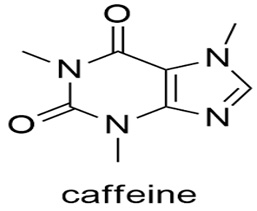
(SoftSchools.com, 2018)
Who uses Caffeine?
- Caffeine is widely used by militaries and civilians globally
- Caffeine is used as a therapeutic drug in clinical health care settings
What is Caffeine? What does Caffeine do?
- Caffeine's most notable pharmacological effect is as a central nervous system stimulant
- Increasing alertness and producing agitation
- It also relaxes smooth muscle
- Stimulates cardiac muscle
- Stimulates diuresis, and appears to be useful in the treatment of some types of headache
- Several cellular actions of caffeine have been observed, but it is not entirely clear how each contributes to its pharmacological profile
- Inhibition of cyclic nucleotide phosphodiesterases, antagonism of adenosine receptors, and modulation of intracellular calcium handling
- A methylxanthine naturally occurring in some beverages and also used as a pharmacological agent
- For management of fatigue, orthostatic hypotension, and for the short term treatment of apnea of prematurity in infants (WebMD, 2018)
Side Effects & Safety
- Caffeine is LIKELY SAFE for most adults when used appropriately.
- Caffeine is POSSIBLY UNSAFE when taken by mouth for a long time or in fairly high doses. Caffeine can cause insomnia, nervousness and restlessness, stomach irritation, nausea and vomiting, increased heart rate and respiration, and other side effects. Caffeine can make sleep disorders in patients with acquired immunodeficiency syndrome (AIDS) worse. Larger doses might cause headache, anxiety, agitation, chest pain, and ringing in the ears. (WebMD, 2018)
- Caffeine is LIKELY UNSAFE when taken by mouth in very high doses as it can cause irregular heartbeats and even death. Products with very concentrated or pure caffeine have a high risk of being used in doses that are too high. Avoid using these products. (WebMD, 2018)
Nicotine-Stimulant-Nootropic
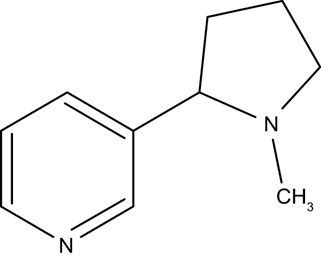
(ResearchGate, 2018)
What is Nicotine? What does Nicotine do?
- Nicotine, the primary alkaloid in tobacco products binds stereo-selectively to nicotinic-cholinergic receptors on autonomic ganglia, the adrenal medulla, neuromuscular junctions and in the brain
- Nicotine exerts two effects, a stimulant effect exerted at the locus ceruleus and a reward effect in the limbic system
- Intranvenous administration of nicotine causes release of acetylcholine, norepinephrine, dopamine, serotonine, vasopressin, beta-endorphin and ACTH
- Nicotine is a highly addictive substance
- Nicotine also induces peripheral vasoconstriction, tachycardia and elevated blood pressure. Nicotine inhalers and patches are used to treat smoking withdrawl syndrome
- Nicotine is classified as a stimulant of autonomic ganglia (DRUGBANK, 2018)
- A cheap, common, and mostly safe drug
- In daily use for centuries by hundreds of millions of people
- Is being investigated for its therapeutic potential for a long list of common ills
- The list includes Alzheimer disease, Parkinson disease, depression and anxiety, schizophrenia, attention deficit hyperactivity disorder (ADHD), and even pain and obesity. (Powledge, 2004)
Ritalin-Methylphenidate-Stimulant-Nootropic
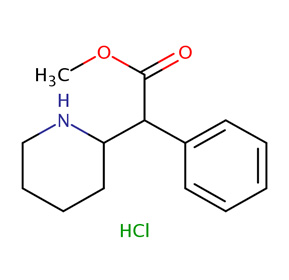
(EPA, 2018)
Who uses Ritalin?
- Active duty U.S. Military soldiers are prescribed Ritalin
- It is unknown if prescribed as a stimulant “GO PILL” for off label use or as a treatment for ADHD, Narcolepsy
- Tricare Management Activity, the arm of the Department of Defense that manages health care services for the military, reveals that the number of Ritalin and Adderall prescriptions written for active-duty service members increased by nearly 1,000 percent in five years, to 32,000 from 3,000 (Friedman, 2012)
What is Ritalin? What does Ritalin do?
- A central nervous system stimulant used most commonly in the treatment of attention-deficit disorders in children and for narcolepsy. Its mechanisms appear to be similar to those of dextroamphetamine. (DRUGBANK, 2018)
- For use as an integral part of a total treatment program which typically includes other remedial measures (psychological, educational, social) for a stabilizing effect in children with a behavioural syndrome characterized by the following group of developmentally inappropriate symptoms: moderate-to-severe distractibility, short attention span, hyperactivity, emotional lability, and impulsivity. (DRUGBANK, 2018)
- Methylphenidate is a central nervous system stimulant used most commonly in the treatment of attention-deficit disorders in children and for narcolepsy. Methylphenidate also blocks the reuptake of norepinephrine and dopamine. (DRUGBANK, 2018)
Opiates & Opioids
What are Opiates/Opioids?
Opiates
- Classically, the term opiate refers to natural substances that come from opium. Opium itself can be extracted from the opium poppy and contains chemical compounds, including morphine and codeine. Thus, examples of opiates are morphine and codeine. (Labonville, 2018)
Opioids
- There are also products that work by binding to the same receptors as opiates, but do not occur naturally, known as semi-synthetic or synthetic opioids. While synthetic opioids are manufactured chemically, semi-synthetic opioids are a hybrid resulting from chemical modifications to natural opiates. (Labonville, 2018)
Examples of synthetic opioids include:
- fentanyl and methadone
- oxycodone and hydrocodone are examples of semi-synthetic opioids (Labonville, 2018)
Classification of opioids by synthetic process (Pathan & Williams, 2012)
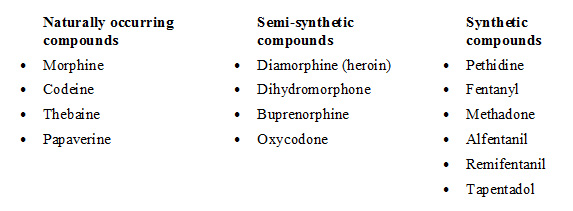
How Do Opioids Work?
- Opioids attach to receptors -- a part of cells -- found in the brain, spinal cord, and other areas of the body. They reduce the sending of pain messages to the brain and reduce feelings of pain. (WebMD, 2018)
- Opioids attach to receptors in the brain. Normally these opioids are the endogenous varieties that are created naturally in the body. Once attached, they send signals to the brain of the "opioid effect" which blocks pain, slows breathing, and has a general calming and anti-depressing effect. The body cannot produce enough natural opioids to stop severe or chronic pain nor can it produce enough to cause an overdose. (NAABT, 2018)
- Opioids can activate receptors because their chemical structure mimics that of a natural neurotransmitter. This similarity in structure "fools" receptors and allows the drugs to lock onto and activate the nerve cells. Although these drugs mimic brain chemicals, they don't activate nerve cells in the same way as a natural neurotransmitter, and they lead to abnormal messages being transmitted through the network. (NAABT, 2018)
- Opioids target the brain's reward system by flooding the circuit with dopamine. Dopamine is a neurotransmitter present in regions of the brain that regulate movement, emotion, cognition, motivation, and feelings of pleasure. The overstimulation of this system, which rewards our natural behaviours, produces the euphoric effects sought by people who misuse drugs and teaches them to repeat the behaviour. (NAABT, 2018)
Who uses them?
- U.S. Military
- combat medics often prescribe narcotic painkillers, including oxycontin, vicodin, and morphine, sometimes in 180-day supplies meant to keep soldiers on their feet through lengthy deployments
- In 2009, military doctors wrote 3.8 million prescriptions for painkillers (Drummond, 2013)
- U.S. Soldiers in Vietnam-units infiltrating Laos for a four-day mission received a medical kit that contained, among other items, 12 tablets of Darvon (a mild painkiller), 24 tablets of codeine (an opioid analgesic), and six pills of Dexedrine. Before leaving for a long and demanding expedition, members of special units were also administered steroid injections (Kamienski, 2016)
Commonly used Opiates & Opioids used by Militaries
Vicodin-Hydrocodone bitartrate and acetaminophen

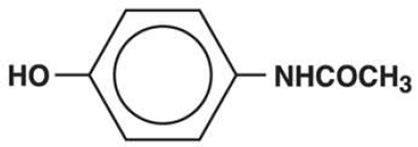
(RxList, 2018)
Hydrocodone bitartrate and acetaminophen
- indicated for the management of pain severe enough to require an opioid analgesic and for which alternative treatments are inadequate
- Acetaminophen is a nonopiate, non-salicylate analgesic and antipyretic (RxList, 2018)
SIDE EFFECTS
- The most frequently reported adverse reactions are light-headedness, dizziness, sedation, nausea and vomiting
Other adverse reactions include:
- Central Nervous System: Drowsiness, mental clouding, lethargy, impairment of mental and physical performance, anxiety, fear, dysphoria, psychological dependence, mood changes
- Gastrointestinal System: Constipation
- Genitourinary System: Ureteral spasm, spasm of vesical sphincters, and urinary retention
- Special Senses: Cases of hearing impairment or permanent loss have been reported predominately in patients with chronic overdose
- Dermatological: Skin rash, pruritus, Stevens-Johnson syndrome, toxic epidermal necrolysis, allergic reactions
- Hematological: Thrombocytopenia, agranulocytosis
- Serotonin syndrome: Cases of serotonin syndrome, a potentially life-threatening condition, have been reported during concomitant use of opioids with serotonergic drugs
- Adrenal insufficiency: Cases of adrenal insufficiency have been reported with opioid use, more often following greater than one month of use
- Anaphylaxis: Anaphylaxis has been reported with ingredients contained in hydrocodone bitartrate and acetaminophen tablets
- Androgen deficiency: Cases of androgen deficiency have occurred with chronic use of opioids (RxList, 2018)
Morphine-sulfate
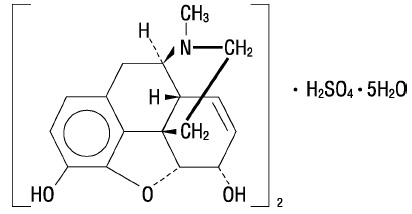
(RxList, 2018)
- Extended-release tablets are indicated for the management of pain severe enough to require daily, around-the-clock, long-term opioid treatment and for which alternative treatment options are inadequate
- Morphine is the most important alkaloid of opium and is a phenanthrene derivative. It is available as the sulfate salt
SIDE EFFECTS
The following serious adverse reactions
- Addiction, Abuse, and Misuse
- Life-Threatening Respiratory Depression
- Neonatal Opioid Withdrawal Syndrome
- Interactions with Other CNS Depressants
- Hypotensive Effect
- Gastrointestinal Effects
- Seizures (RxList, 2018)
OXYCONTIN-(oxycodone hydrochloride)
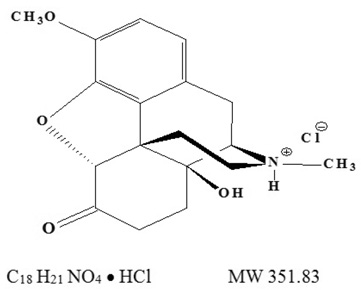
|
(RxList, 2018)
OXYCONTIN (oxycodone hydrochloride)
- is an extended-release opioid analgesic
- Oxycodone is a white, odourless crystalline powder derived from the opium alkaloid, thebaine (RxList, 2018)
SIDE EFFECTS
The following serious adverse reactions
- Addiction, Abuse, and Misuse
- Life-Threatening Respiratory Depression
- Neonatal Opioid Withdrawal Syndrome
- Interactions with Other CNS Depressants
- Hypotensive Effect
- Gastrointestinal Effects
- Seizures (RxList, 2018)
OPIATE/OPIOID WARNING
ADDICTION, ABUSE, and MISUSE; LIFE-THREATENING RESPIRATORY DEPRESSION; ACCIDENTAL INGESTION; and NEONATAL OPIOID WITHDRAWAL SYNDROME
Addiction, Abuse, and Misuse
- Morphine sulfate extended-release tablets expose patients and other users to the risks of opioid addiction, abuse, and misuse, which can lead to overdose and death. Assess each patient’s risk prior to prescribing morphine sulfate extended-release tablets, and monitor all patients regularly for the development of these behaviours or conditions (RxList, 2018)
Life-Threatening Respiratory Depression
- Serious, life-threatening, or fatal respiratory depression may occur with use of morphine sulfate extended-release tablets. Monitor for respiratory depression, especially during initiation of morphine sulfate extended-release tablets or following a dose increase. Instruct patients to swallow morphine sulfate extended-release tablets whole; crushing, chewing, or dissolving morphine sulfate extended-release tablets can cause rapid release and absorption of a potentially fatal dose of morphine
(RxList, 2018)
Accidental Ingestion
- Accidental ingestion of even one dose of morphine sulfate extended-release tablets, especially by children, can result in a fatal overdose of morphine (RxList, 2018)
Neonatal Opioid Withdrawal Syndrome
- Prolonged use of morphine sulfate extended-release tablets during pregnancy can result in neonatal opioid withdrawal syndrome, which may be life-threatening if not recognized and treated, and requires management according to protocols developed by neonatology experts. If opioid use is required for a prolonged period in a pregnant woman, advise the patient of the risk of neonatal opioid withdrawal syndrome and ensure that appropriate treatment will be available (RxList, 2018)
Summary
Professional war fighters have been exploiting drugs for centuries to provide physiological and psychological advantage on the battlefield. Pharmaceuticals provide the capacity to enhance performance, counter fatigue, improve judgement, resist stress and optimize rest. Pharmaceutical soldiers use prescription, over the counter medications and supplements to achieve therapeutic benefits. Drugs classifications include stimulants, sedatives, Nootropics, wakefulness promoting agents, eugorics and psychostimulents. The short-term gain of consuming battlefield performance enhancers is illustrated by the grand scale of documented use by militaries. Long term risk is difficult to qualify and requires evidence based study. Ethical dilemmas are widespread and far reaching. What is certain, is that performance enhancing drugs are providing an edge for soldiers engaged in high stakes operations, when the need to fight longer, fight better and think clearly under fatigue, genuinely matters. Military institutions that study performance enhancing drugs to develop safe, comprehensive and supportive drug programs are moving prudently to realize the physiological and psychological superiority soldiers need to survive the battle space.
S.A. Cavanagh is an independent analyst. Mr. Cavanagh served in the Canadian regular forces as an Infantryman. He holds Diplomas from Humber and Loyalist Colleges and education Certificates from Humber and Durham Colleges.
Resources
Kamienski, L. (2018, May 8) Combat High – A Brief But Sobering History of Drug Use in Wartime. Military History Now. Retrieved from https://militaryhistorynow.com/2018/05/08/combat-high-a-sobering-history-of-drug-use-in-wartime/
Rickett, O. (2016, April 11) Soldiers Have Used Drugs to Enhance Their Killing Capabilities in Basically Every War. Vice News. Retrieved from https://www.vice.com/en_us/article/kwxdby/drugs-have-been-used-in-pretty-much-every-war-ever-shooting-up
RxList. (2018) Amphetamine Sulphate [Figure Structural Formula] Drug Description. Retrieved from https://www.rxlist.com/evekeo-drug.htm#indications_dosage
Miller, S. (2015, November 24) A Pill for ISIS Supersoldiers? Not So Fast. LIVE SCIENCE. Retrieved from https://www.livescience.com/52904-captagon-amphetamine-pill-explainer.html
Drahl, C. (2015, November 21) What You Need To Know About Captagon, The Drug Of Choice In War-Torn Syria. Forbes. Retrieved from https://www.forbes.com/sites/carmendrahl/2015/11/21/what-you-need-to-know-about-captagon-the-drug-of-choice-in-war-torn-syria/#575364b83c82
Gidda, M. (2017, December 17) Drugs in War: What is Captagon, the 'Jihad Pill' Used by Islamic State Militants? Newsweek. Retrieved from https://www.newsweek.com/drugs-captagon-islamic-state-jihad-war-amphetamines-saudi-arabia-608233
RxList. (2018) DEXEDRINE dextroamphetamine sulfate [Figure Structural Formula] Drug Description. Retrieved from https://www.rxlist.com/dexedrine-spansule-drug.htm
Patterson, E. (2018) The Effects of Dexedrine Use. DRUGABUSE.COM. Retrieved from https://drugabuse.com/library/effects-of-dexedrine/
Cunha, J. (2018) Adderall vs. Dexedrine. MedicineNet.com. Retrieved from https://www.medicinenet.com/adderall_vs_dexedrine/article.htm#adderall_vs._dexedrine_comparison
RxList. (2018) Adderall-XR-Capsules. [Figure Structural Formula] Drug Description. Retrieved from https://www.rxlist.com/adderall-xr-capsules-drug/patient-images-side-effects.htm#whatis
Cocaine. (2018) DRUGBANK. Retrieved from https://www.drugbank.ca/drugs/DB00907
ChemSpider-Royal Society of Chemistry (2015) Cocaine hydrochloride. [Figure Structural Formula] Drug Description. Retrieved from http://www.chemspider.com/Chemical-Structure.571113.html
Craw, V. (2015, January 7) Are ISIS fighters fuelled by piles of cocaine? News.com.au. Retrieved from https://nypost.com/2015/01/07/are-isis-fighters-fueled-by-piles-of-cocaine/
Mallinson, A. (2016, May 21)) Pumped up and dangerous: going to war on drugs. The Spectator. Retrieved from https://www.spectator.co.uk/2016/05/pumped-up-and-dangerous-going-to-war-on-drugs/
Cocaine (Topical). (2018, June 7) Drugs.com. Retrieved from https://www.drugs.com/cons/cocaine-topical.html
RxList. (2018) PROVIGIL (modafinil). [Figure Structural Formula] Drug Description. Retrieved from https://www.rxlist.com/provigil-drug.htm
Provigil. (2018, April 23) What is Provigil? Drugs.com. Retrieved from https://www.drugs.com/provigil.html
Westcott, K. (2005, April) Modafinil, Sleep Deprivation, and Cognitive Function in Military
Cunha, J. (2018, May 8) Provigil. RxList.com. Retrieved from https://www.rxlist.com/provigil-side-effects-drug-center.htm
[Photograph Image-thought to be Night Eagle Drug]. (2011, August 27) Ye-seul, Y. The Korean Times. http://www.koreatimes.co.kr/www/news/nation/2011/10/182_96829.html
PLA eyes 'Night Eagle' to make army of night owls. (2011, October 16) South China Morning Post. Retrieved from https://www.scmp.com/article/982075/pla-eyes-night-eagle-make-army-night-owls
Gorvett, Z. (2012, October 1) Brain Doping: A Quiet Revolution. Asian Scientist. Retrieved from https://www.asianscientist.com/2012/10/features/brain-doping-a-quiet-revolution-2012/
Moreno, J. (2012, April 15) Stay Awake, Comrades The Chinese Army's Anti-Sleep Pill. Psychology Today. Retrieved from https://www.psychologytoday.com/ca/blog/impromptu-man/201204/stay-awake-comrades
ChemSpider-Royal Society of Chemistry (2015) Meldonium. [Figure Structural Formula] Drug Description. Retrieved from http://www.chemspider.com/Chemical-Structure.110405.html
Newman, T. (2018, July 19) Why do people use meldonium? Medical News Today. Retrieved from https://www.medicalnewstoday.com/articles/309165.php
Factbox: Five facts about meldonium (2018, February 18) Reuters. Retrieved from https://www.reuters.com/article/us-olympics-2018-doping-fivefacts-factbo/factbox-five-facts-about-meldonium-idUSKCN1G20IT
Niiler, E. (2016, March 9) THE ORIGINAL USERS OF MELDONIUM, SHARAPOVA'S BANNED DRUG? SOVIET SUPER-SOLDIERS. Wired. Retrieved from https://www.wired.com/2016/03/original-users-meldonium-sharapovas-banned-drug-soviet-super-soldiers/
Seppälä, T. (2015) Meldonium Mildronate. Finnish Center for Integrity in Sports (FINCIS)
Finnish Antidoping Agency (FINADA). Retrieved from https://www.suek.fi/documents/13731/128389/Meldonium%2C%20or+mildronate
Saletan, W. (2013, May 29) The War on Sleep-There’s a military arms race to build soldiers who fight without fatigue. Slate Group-Slate.com. http://www.slate.com/articles/health_and_science/superman/2013/05/sleep_deprivation_in_the_military_modafinil_and_the_arms_race_for_soldiers.html
Zolpidem. (2018) RxWiki. Retrieved from https://www.rxwiki.com/zolpidem#drug-class
Drummond, K. (2013, February 5) This is Your Military on Drugs. The New Republic. Retrieved from https://newrepublic.com/article/112269/112269
RxList. (2018) AMBIEN (zolpidem tartrate). [Figure Structural Formula] Drug Description. Retrieved from https://www.rxlist.com/ambien-drug.htm
What are Nootropics? (2017) Nóos Media. LLC SMARTDRUGSMARTS.COM. Retrieved from https://smartdrugsmarts.com/faq/nootropics/
Velazquez, R. (2018, April 17) What Are Nootropics? Brain-Boosters Defined and Explained. Retrieved from https://www.mindlabpro.com/blog/nootropics/what-are-nootropics/
SoftSchools.com. (2018) Caffeine Formula. [Figure Structural Formula] Drug Description. Retrieved from http://www.softschools.com/formulas/chemistry/caffeine_formula/465/
WebMD. (2018) Caffeine. Retrieved from https://www.webmd.com/vitamins/ai/ingredientmono-979/caffeine
ResearchGate. (2018) Nicotine. [Figure Structural Formula] Drug Description. Retrieved from https://www.researchgate.net/figure/Chemical-structure-of-nicotine-with-permission-Bentham-Science-Publishers-C-65_fig1_51160434
RxList. (2018) Nicotrol NS (nicotine nasal spray) Retrieved from https://www.rxlist.com/nicotrol-ns-drug.htm#description
DRUGBANK. (2018) Nicotine. Retrieved from https://www.drugbank.ca/drugs/DB00184
Powledge, T. (2004, November 16) Nicotine as Therapy. National Center for Biotechnology Information, U.S. National Library of Medicine. Retrieved from https://www.ncbi.nlm.nih.gov/pmc/articles/PMC526783/
U.S. EPA. (2018) Methylphenidate hydrochloride. [Figure Structural Formula] Drug Description. Retrieved from https://comptox.epa.gov/dashboard/dsstoxdb/results?search=DTXSID8020886
Friedman, R. (2012, April 21) Why Are We Drugging Our Soldiers? New York Times. Retrieved from https://www.nytimes.com/2012/04/22/opinion/sunday/why-are-we-drugging-our-soldiers.html
DRUGBANK. (2018) Methylphenidate. Retrieved from https://www.drugbank.ca/drugs/DB00422
Labonville, S. (2018, March 29) Opiate, Opioid, Narcotic - What's the Difference? IWP Pharmacy. Retrieved from http://info.iwpharmacy.com/opiate-opioid-narcotic-whats-the-difference
Pathan, H. & Williams, J. (2012, February 6) Basic opioid pharmacology: an update. National Center for Biotechnology Information, U.S. National Library of Medicine. Retrieved from https://www.ncbi.nlm.nih.gov/pmc/articles/PMC4590096/
What are Opioids? (2018) WebMD. Retrieved from https://www.webmd.com/pain-management/opioids-opiates-explained#1
How do Opioids Work on the Brain? (2018) NAABT. Retrieved from https://www.naabt.org/faq_answers.cfm?ID=6
Drummond, K. (2013, February 5) This is Your Military on Drugs. The New Republic. Retrieved from https://newrepublic.com/article/112269/112269
Kamienski, L. (2016, April 8) The Drugs That Built a Super Soldier. The Atlantic. Retrieved from https://www.theatlantic.com/health/archive/2016/04/the-drugs-that-built-a-super-soldier/477183/
RxList. (2018) Vicodin. Retrieved from https://www.rxlist.com/vicodin-drug.htm#side_effects_interactions
RxList. (2018) Vicodin (Hydrocodone Bitartrate and Acetaminophen) [Figure Structural Formula] Drug Description. Retrieved from https://www.rxlist.com/morphine-sulfate-tablets-drug.htm#indications_dosage
RxList. (2018) OXYCONTIN (oxycodone hydrochloride) Retrieved from https://www.rxlist.com/oxycontin-drug.htm
